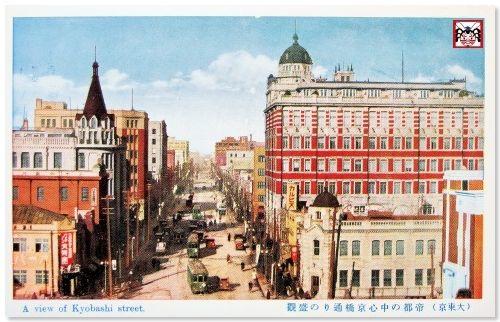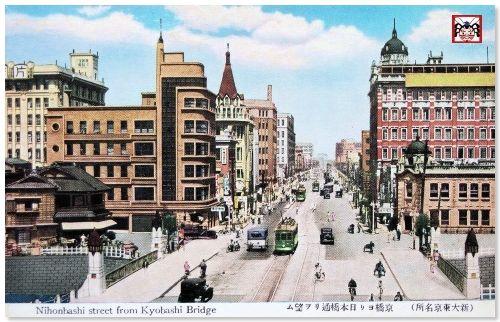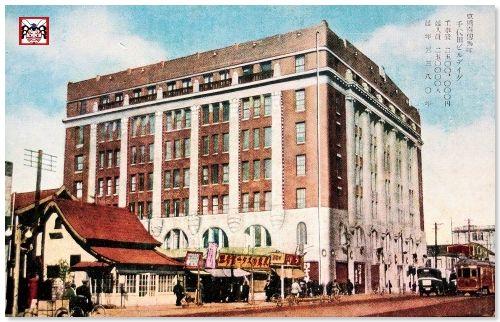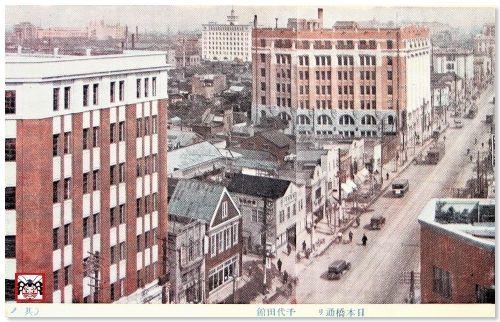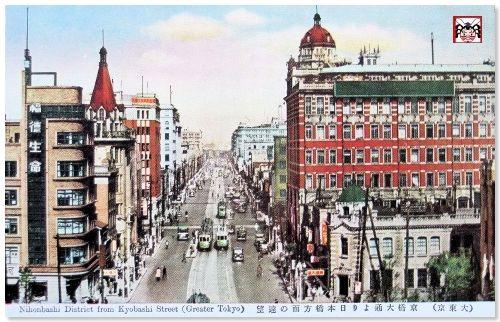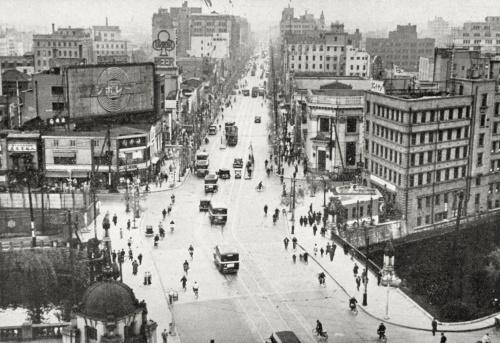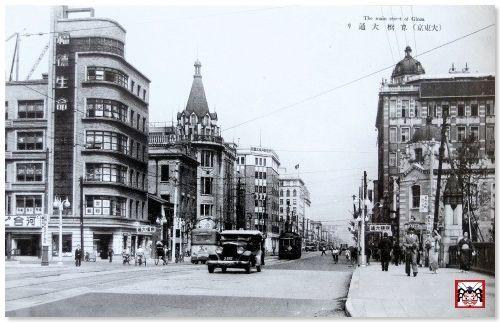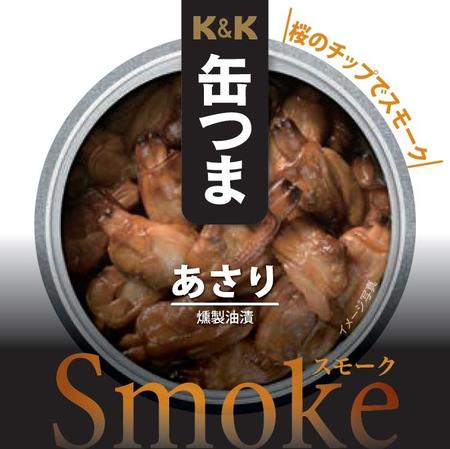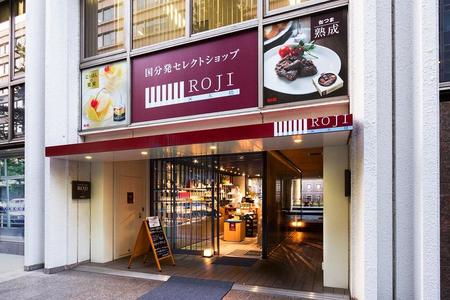It is rosemary sea, which covers "gifts and I enjoy myself" with knowledge management.
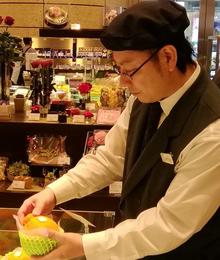 I have introduced a number of fruits at the Nihonbashi Main Store, the main store of the Senbikiya Sohonten, several times.
I have introduced a number of fruits at the Nihonbashi Main Store, the main store of the Senbikiya Sohonten, several times.
For example, the following article.
⇒ /archive/2017/03/post-4085.html
⇒ /archive/2017/09/post-4631.html
Once again, I would like to introduce the richness of one thing and the seasonal fruits of this time.
We spoke with Hiroki Yonamine, assistant manager of the head office of Senbikiya Sohonten Co., Ltd.
The explanation in "" other than food lipo is Mr. Yonaha's words.
Let's introduce the product. All prices are tax-included. All images can be enlarged by clicks.
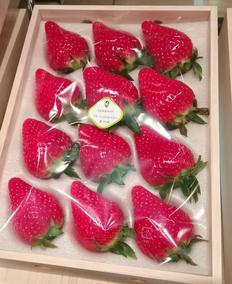
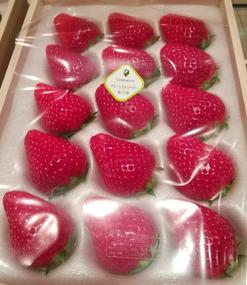
Queen Strawberry Left: 8,640 yen in 3L size 12 paulownia box
Right: 2L size 15 paulownia box 7,560 yen
From Miki-cho, Kagawa Prefecture...
Healthy and delicious strawberries that are carefully grown one by one by one by high cultivation (a cultivation method that makes use of advanced technology) and bathed in the sun.
It is a strawberry with a good balance of sweetness and acidity that ripens red to the inside of the grain.
You can enjoy the juicy taste of crimson strawberries.
"It is not sold at all except for the Senbikiya Sohonten.
Normally, strawberries have a white cross section when cut, but this is a strawberry with a lot of red parts.
It is a strawberry with a slightly sour taste like strawberries, but a high sugar content.
If you have a little sour taste, strawberries have a taste. "
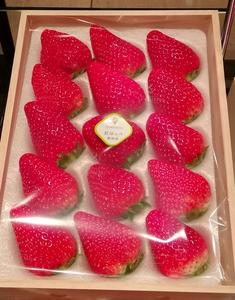
8,640 yen in a 3L size 12 paulownia box.
2L size 15 grains of paulownia box 7,560 yen (the image is 2L size)
It is a grain of large red color, but it is slightly red to the inside.
A hybrid of "Akihime" and "Sachinoka". The varieties were registered in 2002.
It's a naming because it's so delicious that the cheeks fall.
Scent and juicy, rich taste with a balance of sweetness and acidity.
"It's a strawberry with little acidity.
If you don't like sour taste at all, I think this is good.
All kinds of strawberries are the same, until the end of March."
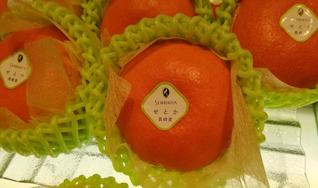
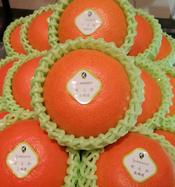
Left: 2,700 yen per piece Right: 1,620 yen per piece
A hybrid of "Kiyomi x Angkor" and "Marcot". In 2001, varieties were registered.
Juicy and soft flesh has a fragrant and elegant taste.
Since there is no seed and the bag is thin, you can take it as is by peeling it.
"It's been only about 15 years since I left, but it's very popular.
Among the citrus fruits produced in Japan, it is the top in terms of name recognition and taste. It's the most popular.
The taste is very rich. It's as rich as oranges and oranges are combined."
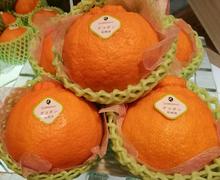
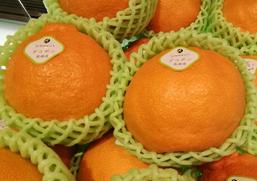
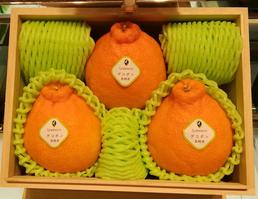
Decopon left: 2,700 yen per piece Right: 2,160 yen per piece
3 assortments 7,560 yen in paulownia box
It was born in 1972 by the crossing of "Ponkan" and "Kiyomi".
The breed name is "Shiranui", but it is called "Dekopon" because it is Kiyomi Ponkan with deco.
This is also easy to peel and can be eaten with a bag. There are few seeds.
You can enjoy the harmony of sweetness and sourness.
"What is coming out now is house, but we will also sell alleys (later), so it will be available until around May.
As a Senbikiya, I would like to choose one with a rich taste, so we will prepare that it is not only sweet but also slightly sour and has a good balance. "
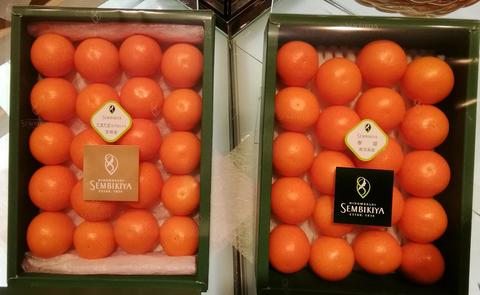
Left: 20 pieces 10,800 yen in fully ripe kinkantama excellent makeup box
Miyazaki Ripe Kinkan "I happen to be Excelent" is a brand that is given only to those that meet strict standards such as sugar content and size.
They are grown carefully in the house and harvested after ripening on the tree.
Have a large and sweet fruit raw with skin.
Mild flavor with less sourness and bitterness of the skin spreads in your mouth.
"There is a mango called" Egg of the Sun ". Like that, it is a tangerine that is Blanding in Miyazaki.
Among the product names "I happened to happen", the one with a higher ripe and sugar content is "I happened to be excellent".
It's the finest one. That's not right. Even so, the price has calmed down.
Among the fruits that are now available, the one with the highest sugar content is this citrus. I recommend it.
It seems that it was branded at the time of Governor Hideo Higashikunihara."
Right: Ripe Kinkan Haruhime 20 pieces in a makeup box 3,780 yen
It is a fully ripe citrus in Minamisatsuma, Kagoshima.
A brand that is given only to those that meet the criteria of sugar content of 16 degrees or more, L size or more, and dark orange overall.
Raise carefully in the house, wait for the ripening period, and harvest 210 days after flowering.
Please enjoy this as well as skin.
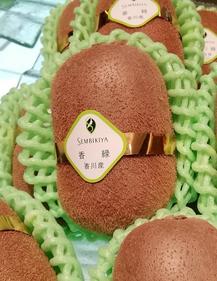
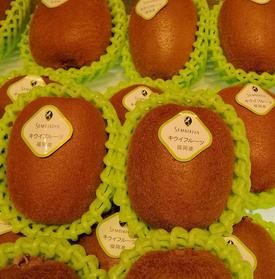
Upper image left: Kiwifruit Koryoku 864 yen per piece within 17 degrees of sugar content from Kagawa
"Koryoku" It is grown from the natural crossing of a species called "Hayward". Registered varieties in 1987.
A slightly elongated large cylindrical fruit. The flesh is bright emerald green.
It has a high sugar content, plenty of sweetness, and also has freshness.
"It's a new variety made from the mainstream species of Hayward.
Characteristics are that the sugar content is very high, and the cross section when cut is emerald.
(others) It's completely different."
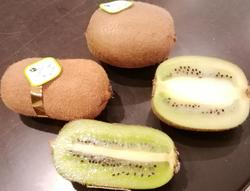 I cut it. (right image)
I cut it. (right image)
The long and thin one is incense green from Kagawa, and the normal oval is from Fukuoka.
Upper image right: Kiwifruit Fukuoka-produced sugar content 324 yen per piece within 14 degrees Celsius
This is also a delicious variety, but the rosmari food lipo squad will try to taste the food comparison with Kagawa's incense green.
As usual, we do not give much information in advance.
In addition, all members eat this meal after eating ordinary kiwi that happened to lunch.
<Fuku> It is from Fukuoka, and <ka> is from Kagawa.
"<Fuku> I enjoyed both sweetness and acidity and it was delicious. <Scent> The sugar content was extremely high, and it was so sweet and delicious that I could hardly feel sour. " Mr. S Yama.
"<Fuku> The fruit has a strong flavor and strong aroma. The acidity is also delicious. <Scent> Sweet and chewy that you can't imagine as a kiwi. The skin was soft and like a cake." O.
"<Fuku> It has a strong acidity but tasteful. <Scent> It's the first time I have ever eaten such a sweet kiwi." Mr. Tsan, 3.
"<Fuku> Sweet and sour taste is delicious. <Scent> The sweetness is deep." Mr. Si.
"<Fuku> It was sweeter than I usually eat. <Scent> It was soft and easy to eat." Mr. S branch.
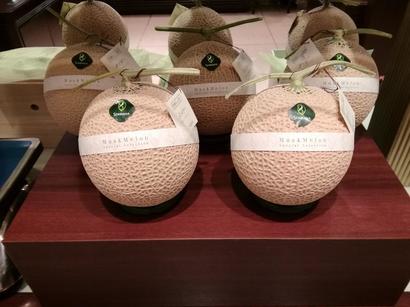
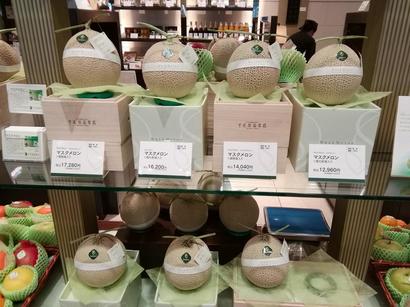
Maskmelon 1200g 12,960 yen 1300g 16,200 yen
1400g21,600 yen 1500g or more 27,000 yen
The mask has nothing to do with the mask of the mask.
The origin of the name is that it is fragrant like musk (musk).
It is grown carefully in a greenhouse covered with glass instead of vinyl.
Moreover, one fruit on one stem: The sweetness is condensed by the luxurious cultivation method of one stem.
It excels in fragrance, sweetness, texture, and all, and its noble taste is exactly the king of fruit.
Once purchased, ripen at room temperature, and cool it for 2 or 3 hours before the date indicated on the attached bill.
"Melons made in Shizuoka Prefecture are collectively referred to as" mask melon ".
Among them, the one made in Fukuroi City, Shizuoka Prefecture is called "Crown Melon".
At Senbikiya, they say mask melon, but most of them sell Crown melons.
I try to keep this melon in the sun as much as possible.
And when it comes to a certain size, we put a white cloth to prevent it from hitting the sun.
When it hits the sun, it turns green, and the blue smell comes out. ・・・
The concept of Senbikiya is to provide delicious foods at the time of eating.
Therefore, we look at the withering of the melon's "heta" and look at the overall softness and color change to guide customers.
If you say "Press your buttocks to judge," the melon will be damaged.
We think that it is the role of Senbikiya to eat the best food at a delicious time. "
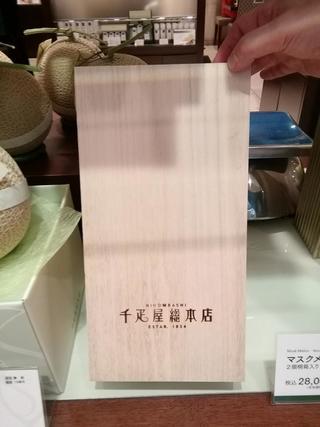
※ The fee for the paulownia box is 1080 yen.
"The only country in Japan is such a wooden box, put in a makeup box, wrap it, and put on a ribbon.
In foreign countries, especially in Europe and the United States, fruits are processed into jams (because the sugar content is low).
I think only Japan is the only food that has a high sugar content and a moderate acidity. "
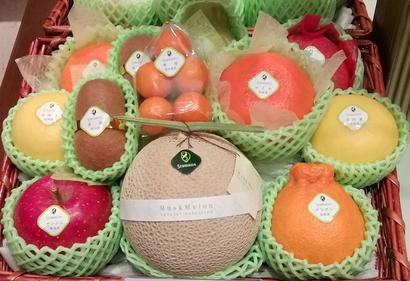
Assorted fruits 32,400 yen
It is a sophisticated assortment unique to Senbikiya Sohonten.

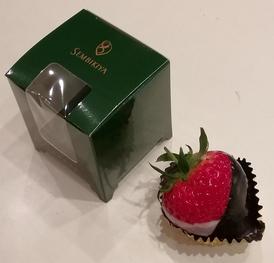
378 yen per queen strawberry chocolate
Introducing a dish from the Western confectionery corner. It's an item for White Day.
Senbikiya's original Queen Strawberry is made into two colors of chocolate.
・・Mr. Yonamine, thank you for teaching me a lot.
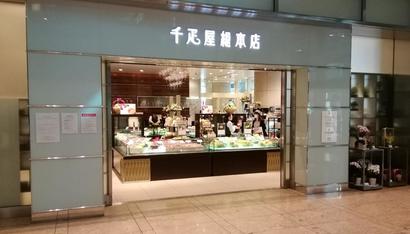
Main Store on the 1st floor of Nihonbashi Main Store (Fruit and Flower Sales Department)
Nihonbashi Mitsui Tower 1F, 2-1-2 Nihonbashi Muromachi
03-3241-0877
Business hours 10:00 to 19:00
Holiday except New Year's Day
Click here for the website of Senbikiya Sohonten.
⇒ http://www.sembikiya.co.jp/
![]()
![]() This is an introduction of an exhibition that also serves as an advertisement.
This is an introduction of an exhibition that also serves as an advertisement.![]()
![]() After retirement, I draw watercolors
After retirement, I draw watercolors ![]()
![]() using pens as a hobby.
using pens as a hobby.![]()
![]() I go out to the suburbs of Tokyo once a month with less than 20 people, and once a year I have an exhibition of everyone at the gallery in Kyobashi.
I go out to the suburbs of Tokyo once a month with less than 20 people, and once a year I have an exhibition of everyone at the gallery in Kyobashi.![]() (@ Kyobashi Edgran). Please take a peek
(@ Kyobashi Edgran). Please take a peek ![]()
![]() at the foot that has stopped by the center.
at the foot that has stopped by the center.![]()
![]()
![]() The event will be held from Monday, February 25 to March 3 (Sun).
The event will be held from Monday, February 25 to March 3 (Sun).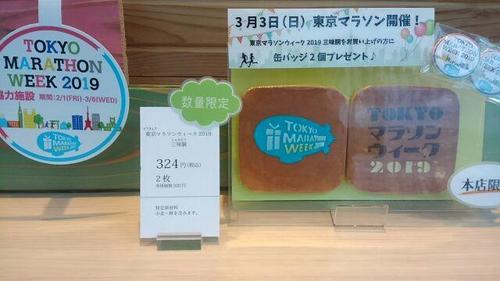




















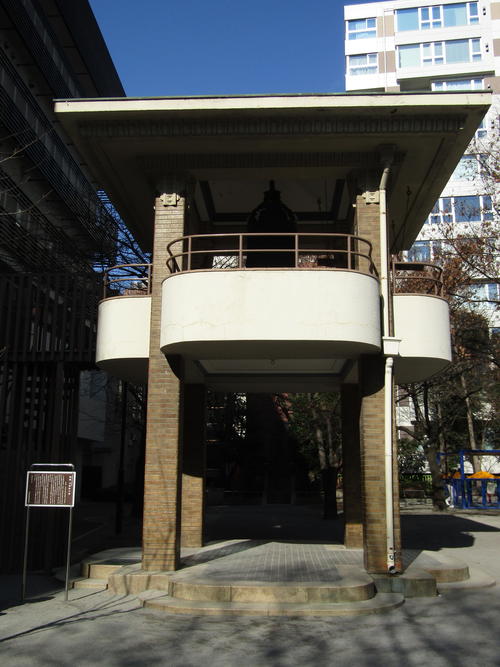
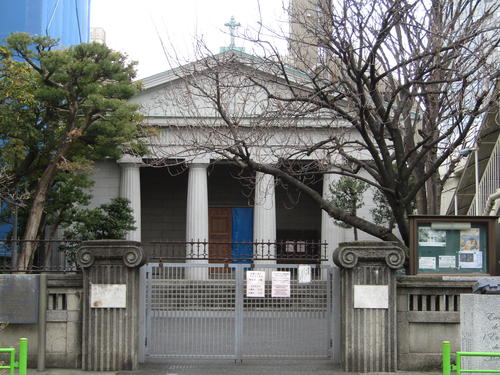
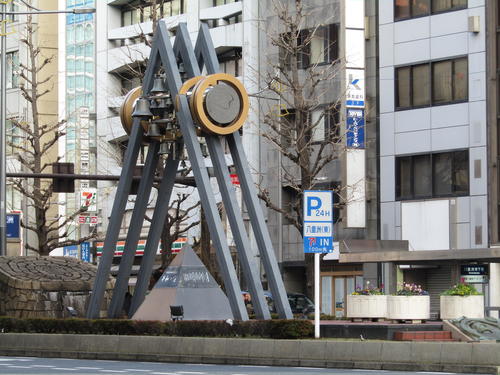
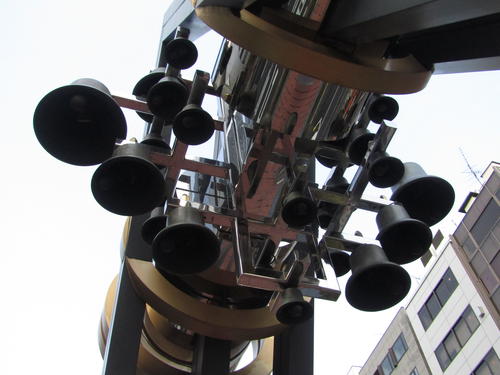
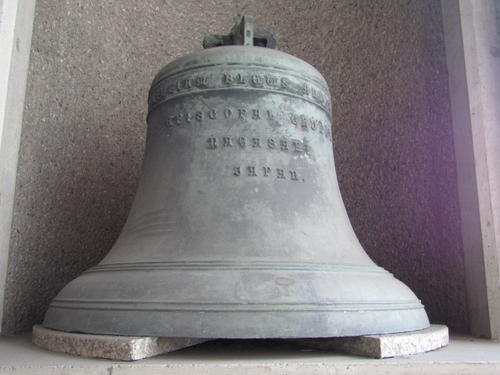
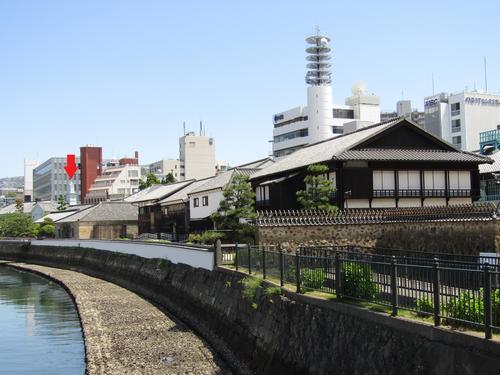
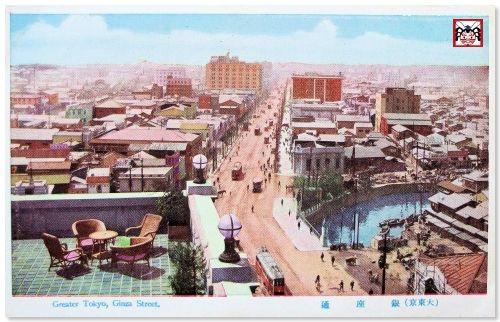
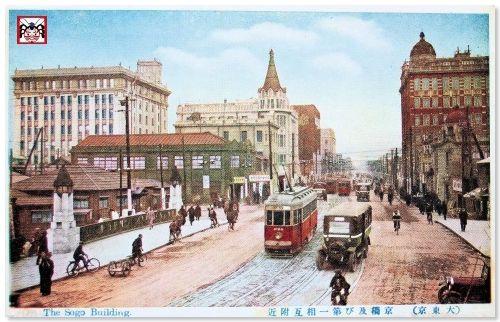
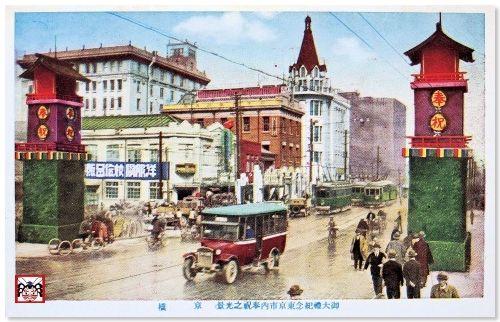
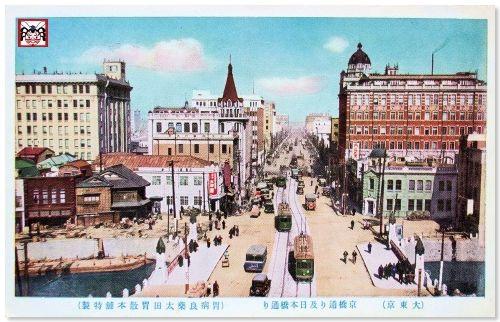 Hoshi Pharmaceutical buildings, which had been damaged by the earthquake, have been renewed, and the reconstruction of the city of Minami Temmacho has ended for the time being. Nevertheless, the cityscape of Minami Temmacho, which retains the remnants of the Taisho era. People walking on Ginza Street may have felt a kind of nostalgia.
Hoshi Pharmaceutical buildings, which had been damaged by the earthquake, have been renewed, and the reconstruction of the city of Minami Temmacho has ended for the time being. Nevertheless, the cityscape of Minami Temmacho, which retains the remnants of the Taisho era. People walking on Ginza Street may have felt a kind of nostalgia.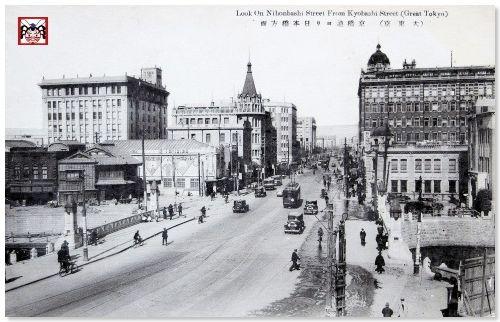
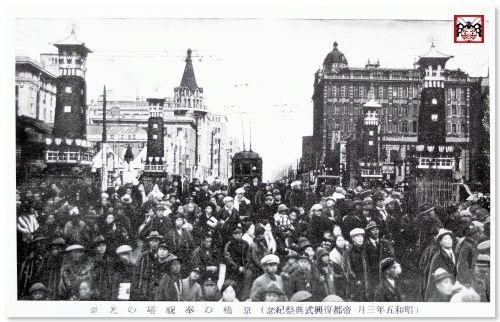
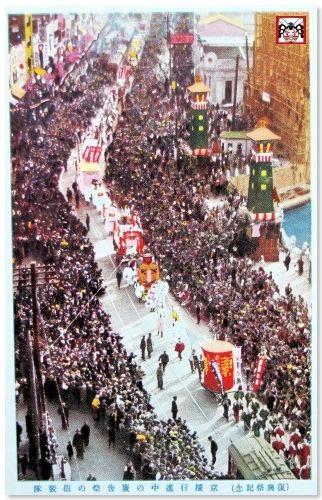 This year when Ginza Mitsukoshi also opened at the 4-chome intersection. There was a change in the town of Ginza. Ginza, which was up to 4-chome, expanded to 8-chome, and the location of Owaricho, where the Matsuzakaya Ginza store was built, has been changed to Ginza 6-chome.
This year when Ginza Mitsukoshi also opened at the 4-chome intersection. There was a change in the town of Ginza. Ginza, which was up to 4-chome, expanded to 8-chome, and the location of Owaricho, where the Matsuzakaya Ginza store was built, has been changed to Ginza 6-chome.